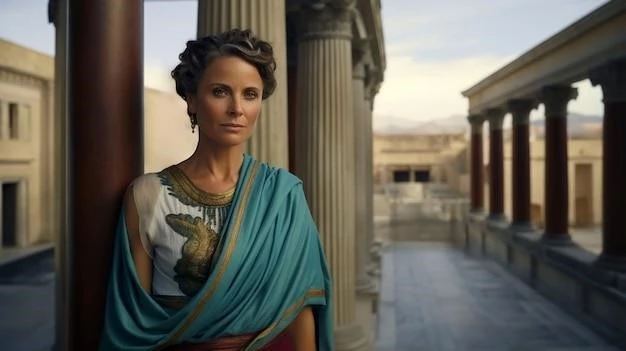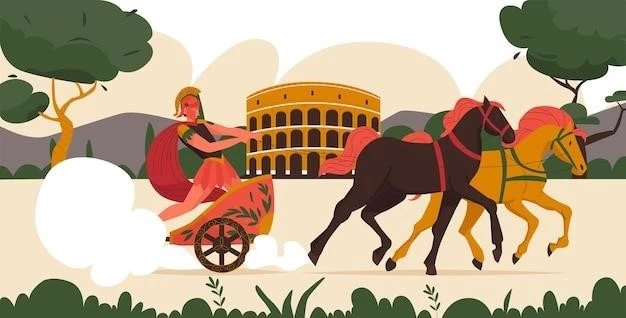The Roman Colosseum: Symbol of Power and Cruelty
Few structures on Earth resonate with the weight of history quite like the Roman Colosseum. A masterpiece of Roman engineering and a chilling testament to the brutality of a bygone era‚ the Colosseum stands as a monument to the complexities of ancient Roman society. It serves as a stark reminder of the empire’s grandeur‚ its thirst for entertainment‚ and the price of its power.
A Triumph of Architecture and Engineering
Construction on the Colosseum‚ originally known as the Flavian Amphitheatre‚ began in 70 AD under the reign of Emperor Vespasian. Completed just ten years later by his son‚ Titus‚ the Colosseum was a gift to the Roman people‚ a symbol of the Flavian dynasty’s power and generosity. Its innovative design‚ featuring a complex system of arches‚ vaults‚ and ramps‚ allowed for the efficient movement of over 50‚000 spectators.
The exterior facade‚ once adorned with gleaming white travertine stone‚ showcased the empire’s architectural prowess. The intricate network of arches‚ each framed by engaged columns of the Doric‚ Ionic‚ and Corinthian orders‚ spoke to the Roman mastery of Greek architectural principles. This imposing facade‚ designed to inspire awe and demonstrate the might of Rome‚ has captivated visitors for centuries.
A Stage for Bloodshed and Spectacle
While its architectural splendor is undeniable‚ the Colosseum’s true purpose was far less refined. It served as a stage for grand spectacles of violence and bloodshed‚ designed to entertain the Roman populace and reinforce the image of imperial power. Gladiatorial combats‚ public executions‚ and even mock naval battles unfolded within its walls‚ captivating audiences with their brutality and drama.
- Gladiatorial Games: The lifeblood of the Colosseum’s entertainment‚ these contests pitted skilled warriors against each other‚ often to the death. Armed with a variety of weapons and fighting styles‚ gladiators were both celebrated heroes and expendable pawns in the Roman thirst for spectacle.
- Animal Hunts (Venationes): Exotic animals‚ captured from the farthest reaches of the empire‚ were brought to the Colosseum to be hunted down in staged spectacles of violence. Lions‚ tigers‚ elephants‚ and even rhinoceroses met their demise within the arena‚ showcasing Rome’s dominion over the natural world.
- Public Executions: The Colosseum served as a grim stage for public executions‚ often carried out with theatrical flair. Criminals‚ prisoners of war‚ and early Christians met their deaths before the baying crowds‚ reinforcing the consequences of defying Roman law and authority.
These events were not merely displays of gratuitous violence; they were carefully orchestrated spectacles designed to reinforce the social and political order of Roman society. The games served as a powerful tool for the emperors to appease the masses‚ distract from internal tensions‚ and project an image of invincibility.
A Legacy of Cruelty and Cultural Significance
The Roman Colosseum remains a powerful symbol of the duality of human nature. It embodies both the heights of artistic and engineering achievement and the depths of human cruelty. While we may condemn the brutality that unfolded within its walls‚ we cannot deny the cultural significance of this iconic structure.
Today‚ the Colosseum stands as a poignant reminder of the fragility of empires and the enduring power of history. It serves as a site of pilgrimage for millions of visitors each year‚ who come to marvel at its architectural grandeur and grapple with its complex and often unsettling legacy. The Colosseum‚ in its silent grandeur‚ continues to spark debate and reflection on the nature of power‚ entertainment‚ and the human condition.
The Colosseum in Ruins: A Symbol of Change
The Colosseum‚ once a vibrant hub of activity‚ fell into disrepair after the fall of the Roman Empire. It was repurposed‚ used as a quarry for building materials‚ and even served as a shelter for the city’s poor. However‚ even in its ruined state‚ the Colosseum never lost its hold on the imagination.
During the Renaissance‚ a renewed interest in classical antiquity led to a re-evaluation of the Colosseum’s architectural significance. Artists and architects studied its structure‚ incorporating elements of its design into their own work. This period marked the beginning of the Colosseum’s transformation from a crumbling ruin into a revered historical monument.
The Colosseum Today: A Legacy Preserved

Today‚ the Colosseum stands as one of the most recognizable landmarks in the world‚ a UNESCO World Heritage Site‚ and a powerful symbol of the enduring legacy of ancient Rome. Extensive restoration efforts continue to preserve the remaining structure‚ ensuring that future generations can experience the awe-inspiring scale and grandeur of this ancient wonder.

The Colosseum serves as a potent reminder of the passage of time‚ the rise and fall of civilizations‚ and the enduring power of human creativity. It stands as a testament to the complexities of the human story‚ a place where beauty and brutality once intertwined‚ leaving an indelible mark on the world’s collective memory.










